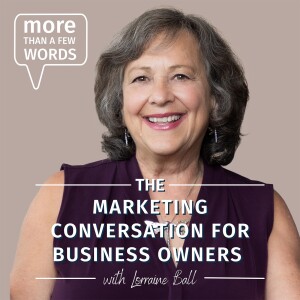
Words have the power to move, motivate, inspire, frighten, and cheer. What you say and how you say it can have a profound impact on another person. And some words, called power words, have more impact than others. These words have a strong meaning which is likely to trigger a psychological or emotional response. They are persuasive, pushing people to take action.
Power words fall in to one of three categories: seductive, emotional, or sensory (visual). As you write web copy, email communication, and social media status updates, employing these powerful phrases will help you grab and hold the attention of a reader.
Seductive Power WordsThese terms have the ability to “seduce” readers, overriding logical reasoning and compelling them to take action. Examples of seductive words include:
- New – People often equate new with better. When you offer something new, they assume it is better than what they already have.
- Free – We are conditioned to respond to the word “free.” That promise reduces the resistance to action.
- Because – Simply giving people a reason is all they need to give you a try.
- How To – This is a common search phrase for almost every product category. The phrase “how to” promises practical information. If you use it, be sure your content delivers on the promise.
Tapping into human emotions with your headlines is more challenging. There isn’t a short list of emotional words that always works. Instead you need to consider the emotions themselves and find ways to tap into them.
Common emotions which will drive action include fear, jealousy, curiosity, joy, surprise, anger, disgust, trust, and anticipation. Not all emotions will work the same way. For example, anger may cause someone to share something on social media, but not purchase a product or a service. In contrast, fear or jealousy may drive someone to take action and buy.
Some studies indicate people are more likely to take action to avoid negative outcomes than to achieve positive ones. Example: What do your competitors know that you don’t? That question is designed to elicit fear from the reader.
Sensory Power WordsSensory words paint a picture in the mind of the reader. These descriptive words are designed to activate one or more of the senses. They describe how we experience the world: how we smell, see, hear, feel, or taste something.
Engage the eyes with words related to colors, shape, or appearance. For instance: gloomy, dazzling, bright, foggy, or gigantic.
Make something tangible when you describe textures. These same words can be applied to feelings and abstract concepts also such as gritty, creepy, slimy, fluffy, or sticky.
When you read words like cha-ching, kaboom, or pow, you can almost hear the sounds. Other descriptive words such as crashing, pounding, or ringing will engage the reader’s auditory sense.
Especially helpful if you are writing about food, words related to taste and smell may get your prospective reader salivating for your product. Many of these words like zesty, tantalizing, sweet, stinky, or stale will transform bland copy.
Remember that motion is sensory, too. Active words such as vibrating, soaring, mind-boggling, staggering, or bumpy take the reader on a journey with you
More Episodes
 2024-11-03
2024-11-03
 2024-10-31
2024-10-31
 2024-10-29
2024-10-29
 2024-10-20
2024-10-20
 2024-10-17
2024-10-17
 2024-10-15
2024-10-15
 2024-10-13
2024-10-13
 2024-10-03
2024-10-03
 2024-09-29
2024-09-29
 2024-09-26
2024-09-26
 2024-09-24
2024-09-24
 2024-09-22
2024-09-22
Create your
podcast in
minutes
- Full-featured podcast site
- Unlimited storage and bandwidth
- Comprehensive podcast stats
- Distribute to Apple Podcasts, Spotify, and more
- Make money with your podcast
It is Free
- Privacy Policy
- Cookie Policy
- Terms of Use
- Consent Preferences
- Copyright © 2015-2024 Podbean.com





